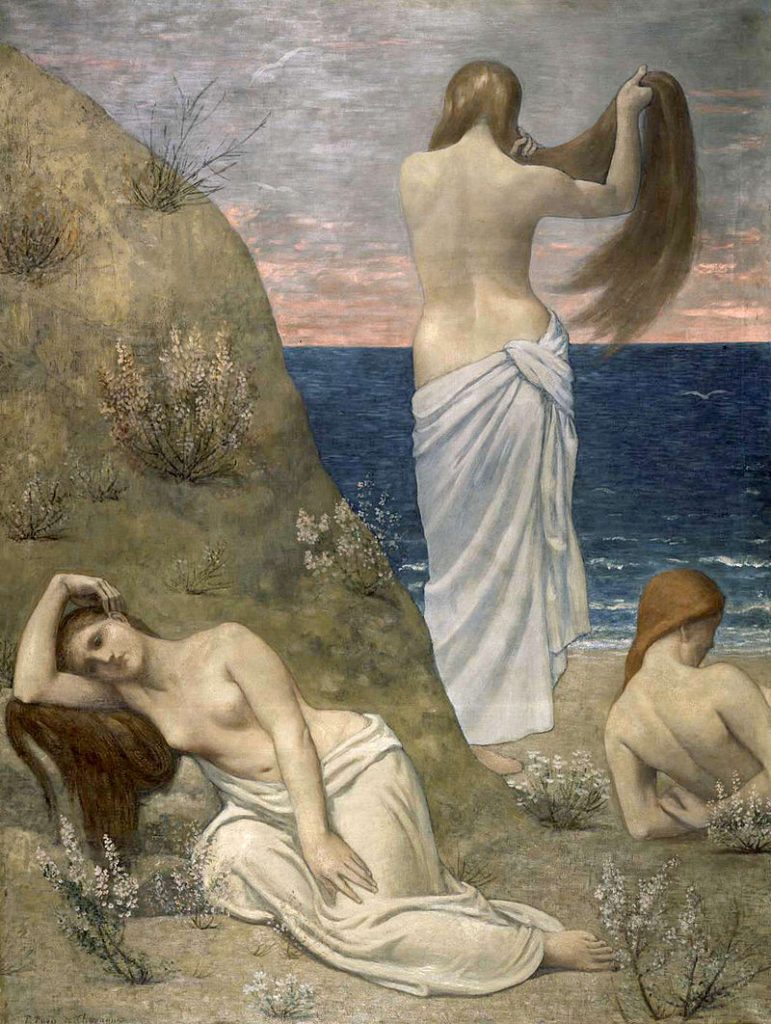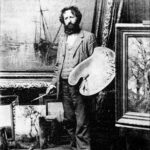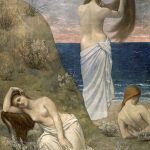
Puvis de Chavannes was born Pierre-Cécile Puvis in a suburb of Lyon, France. He was the son of a mining engineer. Being descended from an old noble family of Burgundy, he later added the ancestral ‘de Chavannes’ to his name. Throughout his life, however, he spurned his Lyon origins, preferring to identify himself with the ‘strong’ blood of the Burgundians, where his father originated.
Puvis de Chavannes was educated at the Amiens College and at the Lycée Henri IV in Paris. He intended to follow his father’s profession until a serious illness compelled him to convalesce at Mâcon with his brother and sister-in-law in 1844 and 1845, interrupting his studies. A journey to Italy opened his mind to fresh ideas, and on his return to Paris in 1846 he announced his intention to become a painter. He studied first under Eugène Delacroix, but only very briefly, as Delacroix closed his studio shortly afterward due to ill health. He studied subsequently under Henri Scheffer and then Thomas Couture.
A Man Who Did His Own Thing
His training was not classical as he found that he preferred to work alone. He took a large studio near the Gare de Lyon and attended anatomy classes at the Académie des Beaux-Arts.
It was not until a number of years later, when the government of France acquired one of his works, that he gained wide recognition.
Puvis de Chavannes made his Salon debut in 1850 with Dead Christ, Negro Boy, The Reading Lesson, and Portrait of a Man.
In Montmartre, he had an affair with one of his models, Suzanne Valadon, who would become one of the leading artists of the day as well as the mother, teacher, and mentor of Maurice Utrillo. From 1856, he was in a relationship with the Romanian princess, Marie Cantacuzène. The couple were together for 40 years, and were married before their deaths in 1898. Source: Wikipedia.




